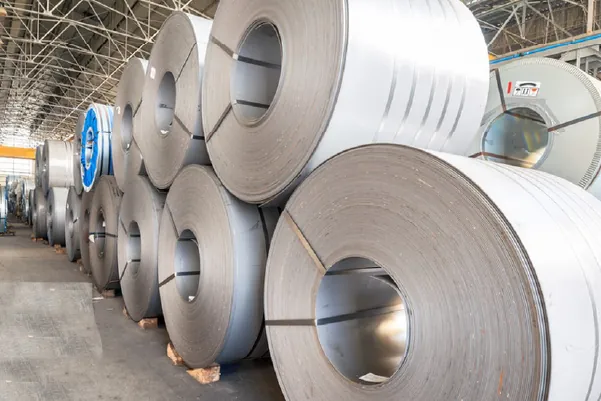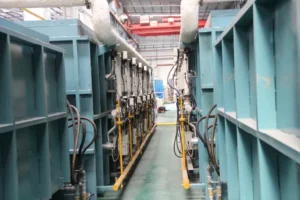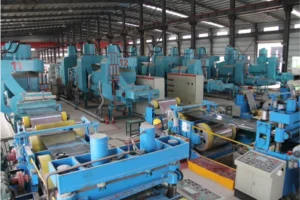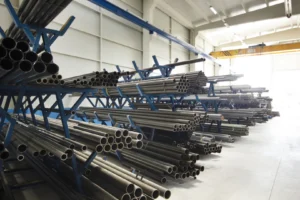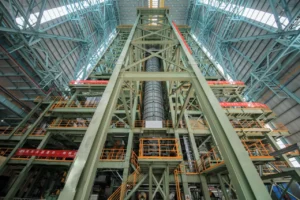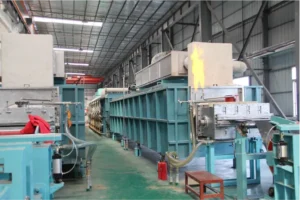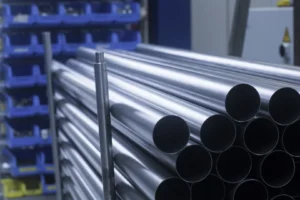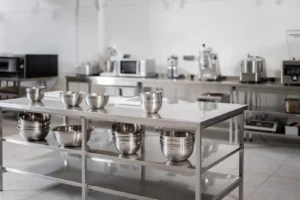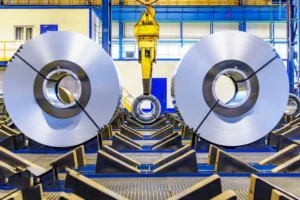Stainless Steel Coil Manufacturing Process: A Step-by-Step Guide
Struggling to understand the complex stainless steel manufacturing journey? This lack of clarity can hinder your procurement and project planning. Here is your clear, step-by-step guide.
Stainless steel coil manufacturing is a multi-stage process that transforms raw materials like scrap steel, nickel, and chromium into a finished product. Key steps include melting, casting into slabs, hot rolling, cold rolling for precision, and final finishing with rigorous quality control checks.
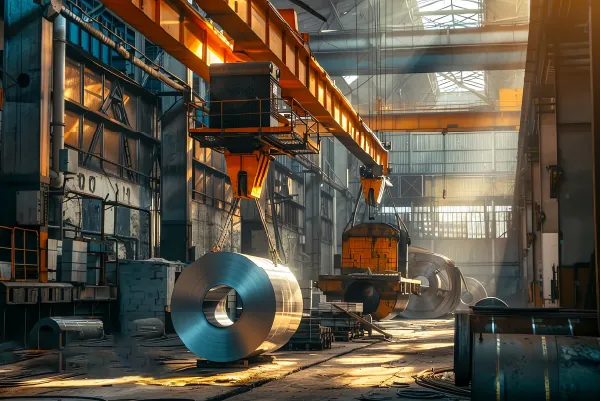
As the Global Business Director at MFY, I've seen firsthand how a deep understanding of this process empowers our partners to make smarter decisions. It’s not just about a product; it’s about a journey of transformation from raw earth to a high-performance material that builds our world. Let's walk through that journey together, step by step, so you can see exactly what goes into the high-quality coils you rely on.
Why Is Raw Material Selection So Critical for Stainless Steel Coils?
Choosing the wrong raw materials for a project? This mistake leads to product failures, budget overruns, and damaged reputations. The right selection is the bedrock of quality.
Proper raw material selection is vital because the specific blend of iron, chromium, nickel, and other elements determines the final stainless steel grade. This directly impacts its corrosion resistance, strength, and suitability for the intended application, such as 304 for general use or 316 for marine environments.
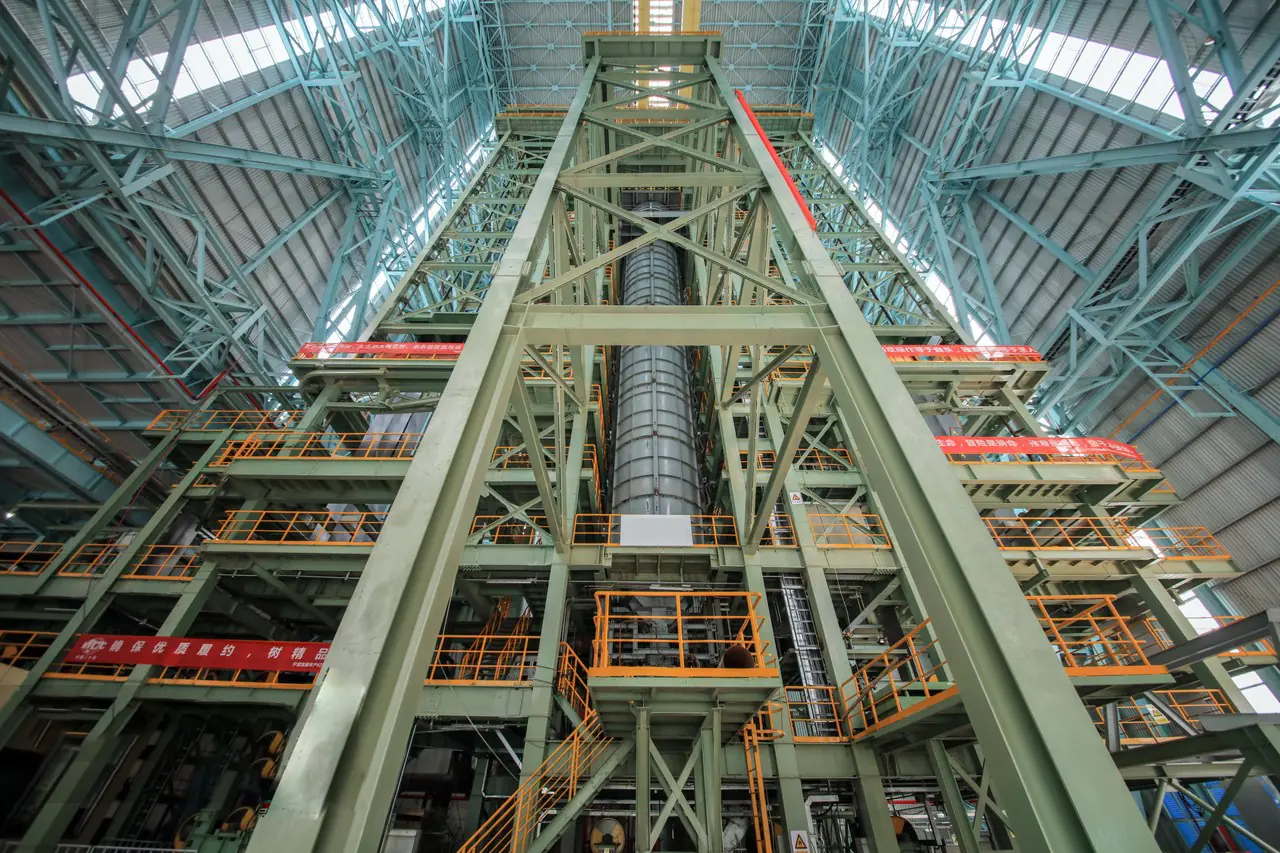
At MFY, our integrated supply chain gives us a significant advantage right from this first step. We don't just buy materials; we manage a flow. The process begins with a carefully calculated recipe. The primary ingredients are typically a mix of stainless steel scrap, carbon steel scrap, and primary elements like ferrochrome (for chromium), ferronickel (for nickel), and molybdenum. The precision here is non-negotiable. The grade of stainless steel you need—be it a workhorse like 304 or a specialized grade for high-corrosion environments like 316—is dictated entirely by this initial chemical mix. I remember a client in the food processing industry who needed a specific grade to comply with health standards. A slight deviation in the raw material composition could have rendered their entire equipment investment useless.
The Science of the Mix
The selection process is a balance of chemistry, economics, and quality. Here’s a simplified breakdown of what we look for:
| Material | Purpose | Key Consideration |
|---|---|---|
| Stainless Steel Scrap | Primary source of iron and alloys | Cleanliness and known composition are crucial. |
| Ferrochrome (FeCr) | Adds chromium for corrosion resistance | The foundation of "stainless" properties. |
| Nickel (Ni) | Improves formability, weldability, and toughness | Essential for austenitic grades like 304/316. |
| Molybdenum (Mo) | Enhances resistance to pitting corrosion | A key ingredient for marine-grade 316 steel. |
Controlling the quality of these inputs is the first, and arguably most important, quality control checkpoint. Using advanced analysis, we verify the composition of all incoming materials to ensure they meet our stringent standards before they ever enter the furnace. This foundational diligence prevents costly problems down the line and is the first promise of quality we make to our clients.
What Happens During the Melting and Casting Process?
You might think melting metal is simple. But even trace impurities or slight temperature deviations can compromise the entire batch, wasting time and resources. This is a precise science.
During melting and casting, the selected raw materials are melted in an Electric Arc Furnace (EAF) at approximately 1,650°C (3,000°F). The molten steel is then refined to adjust its chemical composition before being continuously cast into solid forms like slabs or billets.
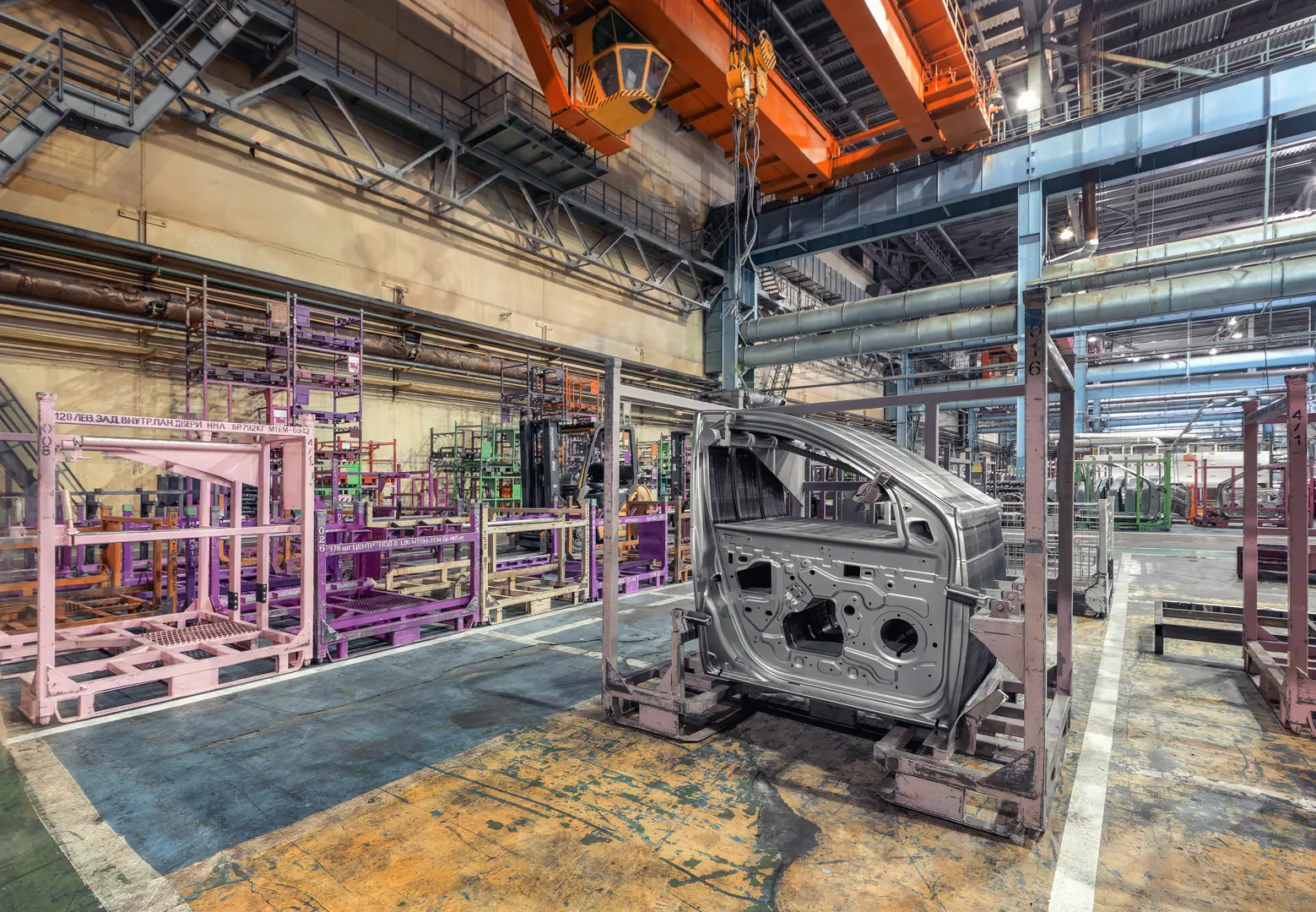
Once the raw materials are selected and weighed, they are charged into an Electric Arc Furnace (EAF). This is where the brute force of manufacturing meets the precision of chemistry. Massive graphite electrodes deliver a powerful electric current, generating intense heat that melts the materials into a liquid bath. But melting is just the beginning. The molten steel at this stage is unrefined. To achieve the exact chemical specification, it's transferred to an Argon Oxygen Decarburization (AOD)[^1] converter. Here, a mixture of argon and oxygen is blown through the metal. This crucial step removes excess carbon and other impurities while preserving the expensive alloys like chromium. This is where modern digitalization, a key industry trend, truly shines. Sensors and automated systems provide real-time feedback on the steel's composition, allowing our metallurgists to make micro-adjustments with incredible accuracy.
Refining for Perfection
The AOD process is where the steel's personality is finalized. It’s more efficient and precise than relying on the EAF alone.
- H3: Decarburization: Oxygen reacts with excess carbon, removing it as carbon monoxide gas. This is vital for achieving the low carbon content required for most stainless grades to prevent corrosion issues after welding.
- H3: Impurity Removal: The process also helps remove sulfur and other undesirable elements, resulting in a cleaner, higher-quality steel.
- H3: Final Casting: After refining, the liquid steel is transferred to a continuous caster. It flows into a water-cooled mold, solidifying into a long, continuous slab. This slab is then cut into manageable lengths, ready for the next stage: hot rolling. This continuous process is far more efficient and yields a more uniform product compared to older ingot casting methods.
How Does the Hot Rolling Process Shape the Steel?
You have a thick, heavy slab of steel. Trying to shape it without the right process leads to cracks, an inconsistent finish, and poor mechanical properties. Hot rolling is the powerful first step.
The hot rolling process involves heating the steel slab to a high temperature (above 1,100°C or 2,000°F) and passing it through a series of massive rollers. Each pass progressively reduces the slab's thickness and elongates it into a long, thin sheet.
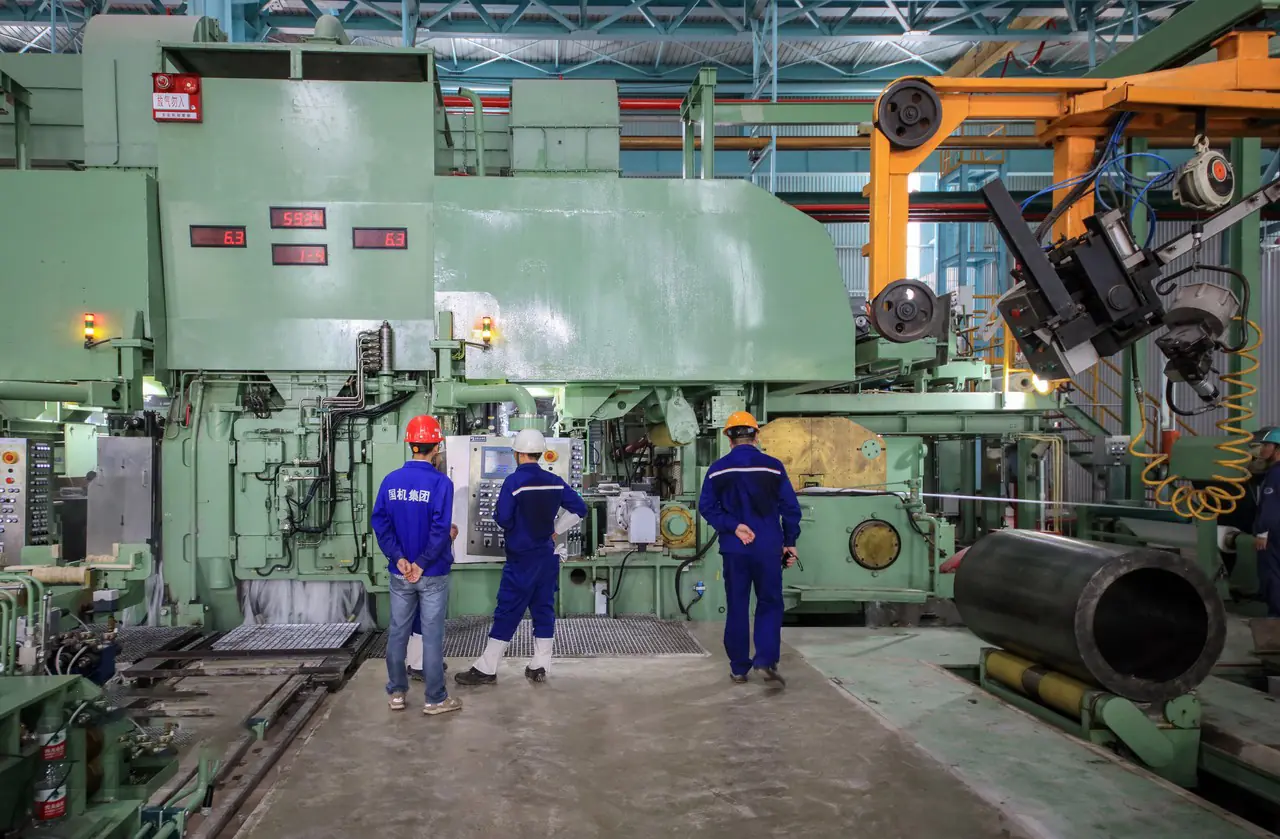
Think of hot rolling as using immense force to knead dough, but on a colossal and fiery scale. The cut slabs are first transported to a reheating furnace, where they are brought to a uniform, malleable temperature. This is not just about making the steel soft; it’s about refining its internal grain structure. Once it reaches the optimal temperature, the glowing red slab is sent to the rolling mill. It starts in a "roughing mill," where a few passes make drastic reductions in thickness. From there, it moves to a series of "finishing mills," which are precisely calibrated to reduce the thickness to the target dimension, often just a few millimeters, while stretching its length to hundreds of meters. The entire process is a high-speed, automated symphony of heat, pressure, and control. Automation is key here, as computer-controlled systems ensure the temperature and roller pressure are perfectly maintained. This minimizes waste and ensures the coil has consistent mechanical properties from one end to the other, a critical factor for our clients in construction and heavy manufacturing.
From Slab to Coil
The transformation in the hot rolling mill is dramatic.
- H3: Recrystallization: The high temperature allows the steel's crystal structure to reform and refine as it's being deformed. This process, called recrystallization[^2], prevents the steel from becoming brittle and ensures it remains strong and ductile.
- H3: Scale Formation: As the hot steel is exposed to air, a dark oxide layer, known as mill scale, forms on the surface. This scale is removed in a later finishing step.
- H3: Coiling: After the final pass through the finishing mills, the long, flat strip of steel is sprayed with water to cool it and then wound into a large coil. This is now what we call a hot-rolled stainless steel coil, the raw material for the next critical stage.
What Makes the Cold Rolling Process So Important?
Hot-rolled steel is strong but lacks a fine finish and dimensional accuracy. For many high-tech applications, its rough surface and looser tolerances are simply not good enough.
Cold rolling is crucial because it processes the steel at room temperature to achieve a smoother surface finish, much tighter dimensional tolerances, and increased strength and hardness. This makes the steel suitable for precision applications in automotive, electronics, and appliances.
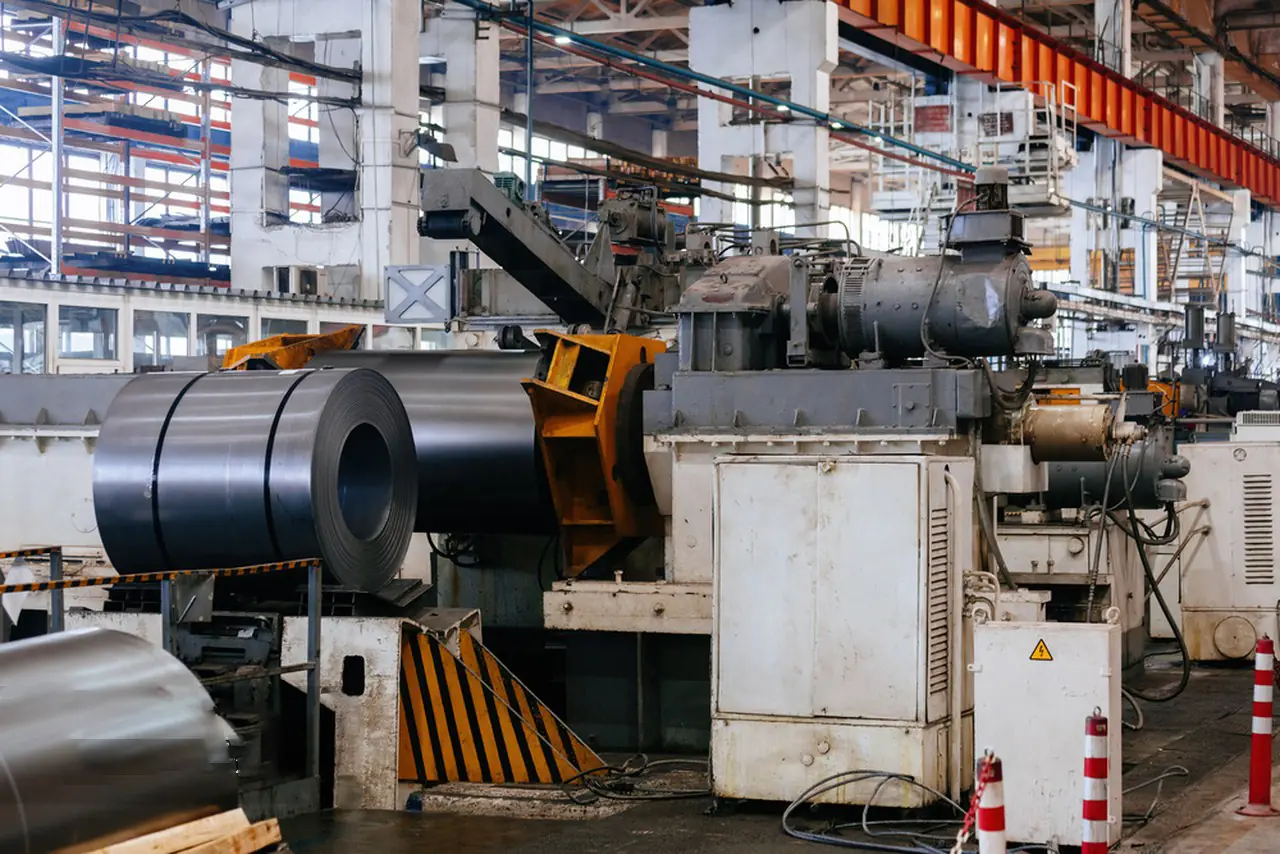
If hot rolling is about brute force, cold rolling is about finesse. This is where we take the hot-rolled coil and refine it into a high-performance product. The process begins with uncoiling the hot-rolled steel and first putting it through an annealing and pickling[^3] line. Annealing is a heat treatment that softens the steel, and pickling is an acid bath that removes the black mill scale, revealing a clean, matte surface. The clean coil is then fed through a series of rollers under immense pressure, but this time without pre-heating. This is why it's called "cold" rolling. Because the steel is not malleable, the process requires significantly more force. This intense pressure not only reduces the thickness with incredible precision but also fundamentally changes the steel's properties. I often work with clients in the automotive sector who require panels with a perfect surface for painting and exact thickness for fitment. Cold rolling is the only way to meet those demands.
The Benefits of Cold Working
The improvements from cold rolling are significant and create a higher-value product.
| Property | Hot-Rolled Steel | Cold-Rolled Steel |
|---|---|---|
| Surface Finish | Rough, with mill scale (HRAP) | Smooth and clean (e.g., 2B, BA) |
| Dimensional Tolerance | Looser, less precise | Very tight, highly accurate |
| Strength | Lower | Higher (due to work hardening) |
| Ductility | Higher | Lower |
The "work hardening" that occurs during cold rolling strengthens the steel but also makes it less ductile. This is why annealing is often performed both before and sometimes after cold rolling, depending on the final properties required. Digitalization plays a huge role here; laser-based sensors measure the thickness in real-time to an accuracy of microns, ensuring every meter of the coil meets the exact specification.
What Are the Final Finishing and Quality Control Steps?
The coil is now the right thickness and finish. But without final checks, hidden stresses or surface defects could lead to catastrophic failures in the field. This final stage guarantees performance.
The final steps involve annealing to soften the steel and remove internal stresses, pickling to clean the surface, and a battery of quality control tests. These tests verify mechanical properties, chemical composition, and surface quality to ensure the coil meets all industry standards.
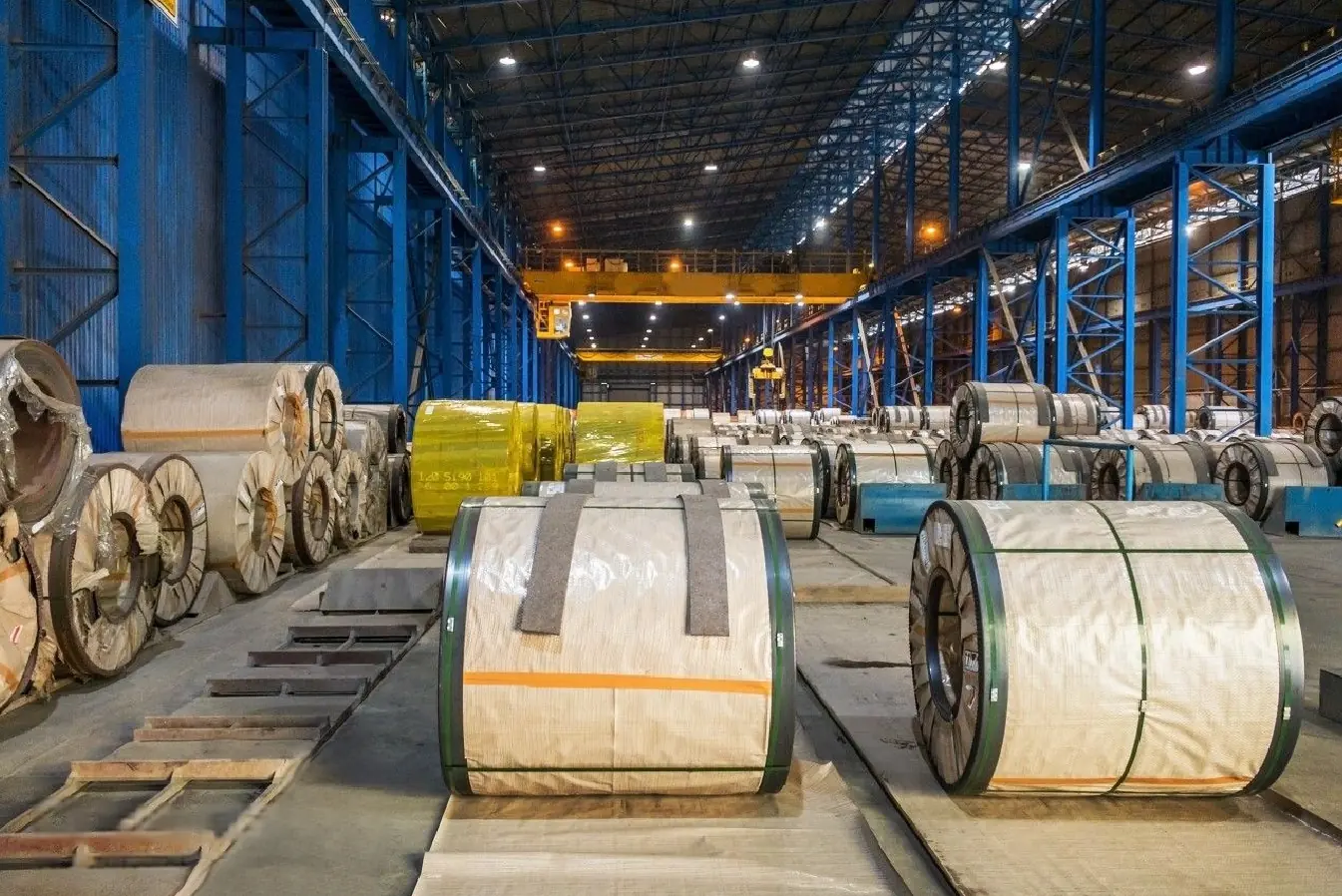
The journey isn't over until the coil is certified to perform. After the final cold rolling or hot rolling pass, most coils go through a final finishing line. The most common process is "annealing and pickling." The coil is unrolled and passed through a furnace to heat it (annealing), which relieves internal stresses built up during rolling and restores its ductility. It then immediately goes into an acid bath (pickling) to remove any scale or oxides formed during annealing, resulting in the common "2B" matte finish. For applications requiring a mirror-like appearance, further steps like bright annealing or polishing are performed. But the most critical part of this stage is quality control. At MFY, this is a non-negotiable gate. We take samples from each coil and subject them to a rigorous series of tests. This is our final promise to the customer, backed by data.
The Guarantee of Quality
Our labs are equipped to perform a comprehensive analysis to ensure every coil meets or exceeds international standards.
- H3: Mechanical Testing: We perform tensile tests to measure the steel's strength and elongation, and hardness tests to check its resistance to indentation. This data confirms the steel will perform as expected under physical stress.
- H3: Chemical Analysis: Using a spectrometer, we re-verify the exact chemical composition. This confirms the grade is correct and free from harmful impurities.
- H3: Surface Inspection: Both automated optical inspection systems and trained human eyes scan the surface for any defects like scratches, pits, or roll marks. This ensures the aesthetic and functional quality required for demanding applications.
Only after a coil passes every single one of these tests is it approved, packaged to prevent damage during transit, and stamped with the MFY seal of quality.
Conclusion
From a calculated mix of raw materials to a precisely finished and tested coil, the manufacturing process is a blend of power and precision. Understanding these steps—melting, casting, rolling, and finishing—is key to appreciating the quality that goes into every coil and making informed supply chain decisions.
Have Questions or Need More Information?
Get in touch with us for personalized assistance and expert advice.
